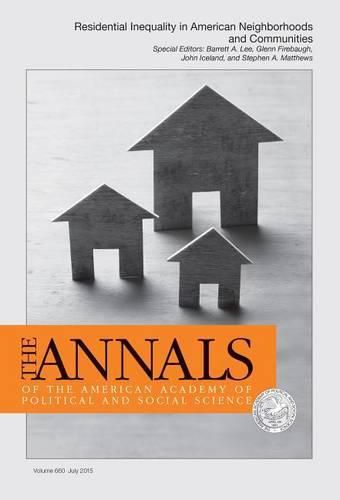Readings Newsletter
Become a Readings Member to make your shopping experience even easier.
Sign in or sign up for free!
You’re not far away from qualifying for FREE standard shipping within Australia
You’ve qualified for FREE standard shipping within Australia
The cart is loading…






Residential Inequality in American Neighborhoods and Communities. Volume 660, The Annals of the American Academy of Political and Social Science, July 2015. This volume, edited by Barrett Lee, Glenn Firebaugh, John Iceland, and Stephen Matthews, consists of 17 papers first presented at the Penn State Stratification Conference last fall. Motivating the volume is the dogged persistence of residential inequality in the United States. Although many people pursue the American Dream, seeking desirable homes and neighborhoods, their progress has been slowed by rising income disparities, natural disasters, the Great Recession, mortgage foreclosures, and dramatic swings in housing prices. Whether immigrants and their children are able to achieve their residential goals is another current concern. At the same time, spatial divides along race and class lines have been sustained through discriminatory practices and individuals’ preference to live near those similar to themselves.
$9.00 standard shipping within Australia
FREE standard shipping within Australia for orders over $100.00
Express & International shipping calculated at checkout
Residential Inequality in American Neighborhoods and Communities. Volume 660, The Annals of the American Academy of Political and Social Science, July 2015. This volume, edited by Barrett Lee, Glenn Firebaugh, John Iceland, and Stephen Matthews, consists of 17 papers first presented at the Penn State Stratification Conference last fall. Motivating the volume is the dogged persistence of residential inequality in the United States. Although many people pursue the American Dream, seeking desirable homes and neighborhoods, their progress has been slowed by rising income disparities, natural disasters, the Great Recession, mortgage foreclosures, and dramatic swings in housing prices. Whether immigrants and their children are able to achieve their residential goals is another current concern. At the same time, spatial divides along race and class lines have been sustained through discriminatory practices and individuals’ preference to live near those similar to themselves.